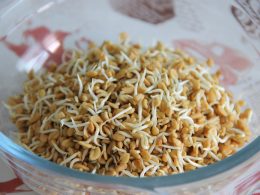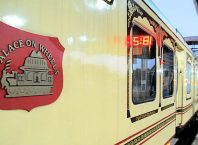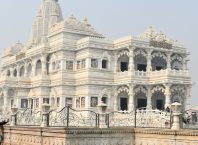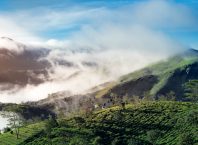Table of Contents
Mumbai, the city of dreams, is one of the most vibrant and exciting cities in India. It is the hub of the Indian film industry and is known for its lively nightlife, iconic landmarks, and mouth-watering street food. If you are planning a trip to Mumbai, we have got you covered with the top-rated best tourist places to visit in Mumbai. Here is a comprehensive guide to the 20 must-visit places in Mumbai.
Gateway of India
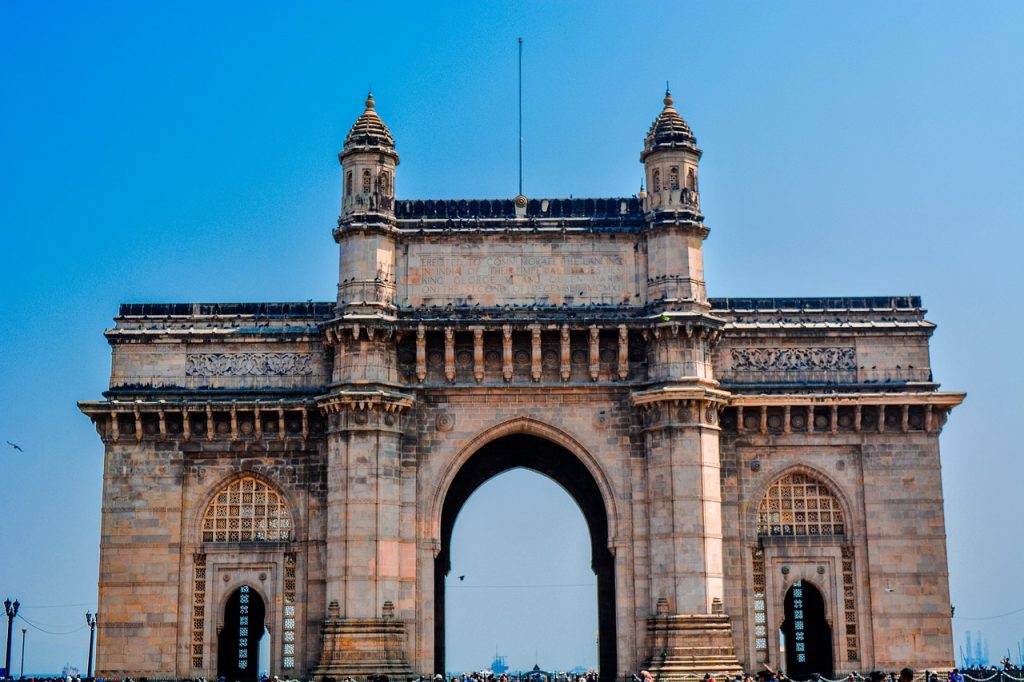
The Gateway of India is an iconic monument located in the Colaba district of Mumbai. It was built in 1924 to commemorate the visit of King George V and Queen Mary to Mumbai. The monument is a fusion of Indian, Muslim, and European architectural styles and is a symbol of the city’s colonial past.
The Gateway of India is a popular tourist attraction and a bustling hub for locals. It overlooks the Arabian Sea and provides stunning views of the sea and the nearby Elephanta Caves. The monument has also been featured in many Bollywood movies, making it a favorite spot for movie buffs.
Visitors can take a ferry from the Gateway of India to the nearby Elephanta Island, which is famous for its rock-cut caves and temples. The ferry ride is a great way to enjoy the scenic beauty of the Arabian Sea and the Mumbai skyline.
The Gateway of India is also a popular spot for street vendors selling souvenirs, snacks, and drinks. Visitors can enjoy a leisurely stroll along the promenade, soak in the views, and indulge in some street food.
In recent years, the Gateway of India has become a popular spot for art installations and cultural events. The monument has been lit up in different colors to mark special occasions and festivals.
Marine Drive
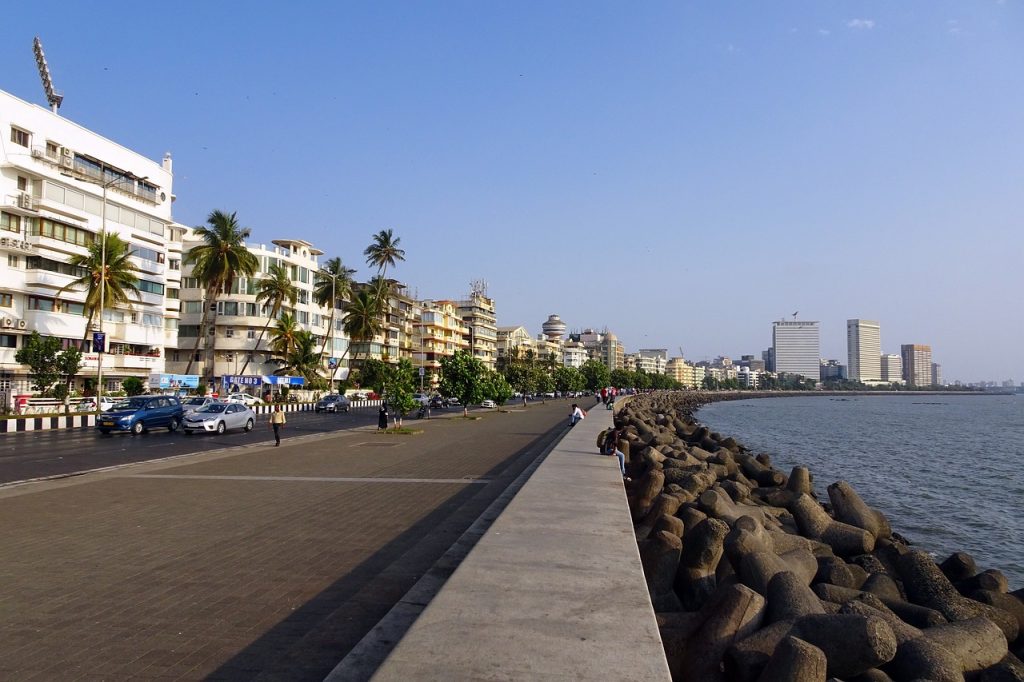
Marine Drive, also known as the Queen’s Necklace, is a 3.6 km-long boulevard located along the coast of Mumbai. It is a popular spot for locals and tourists alike and is known for its stunning views of the Arabian Sea.
The boulevard is lined with palm trees and Art Deco buildings and is a popular spot for leisurely walks, jogs, and cycling. The streetlights along the boulevard resemble a string of pearls, earning it the nickname “Queen’s Necklace.”
The best time to visit Marine Drive is during sunset when the sky turns into shades of pink and orange, and the lights of the buildings along the coastline come alive. The sea breeze and the sound of waves crashing against the rocks make it a perfect spot for a romantic evening or a peaceful walk.
Marine Drive is also a foodie’s paradise, with a plethora of street food options available. From Mumbai’s famous Vada Pav and Bhel Puri to Chaat and Pav Bhaji, the options are endless.
The boulevard is located close to several other tourist attractions, such as the Gateway of India, the Chhatrapati Shivaji Maharaj Terminus, and the Crawford Market, making it a convenient spot for tourists to visit.
Marine Drive is a symbol of Mumbai’s spirit and resilience. It has witnessed many historic events, including the city’s struggle for independence, making it an integral part of the city’s heritage.
Elephanta Caves
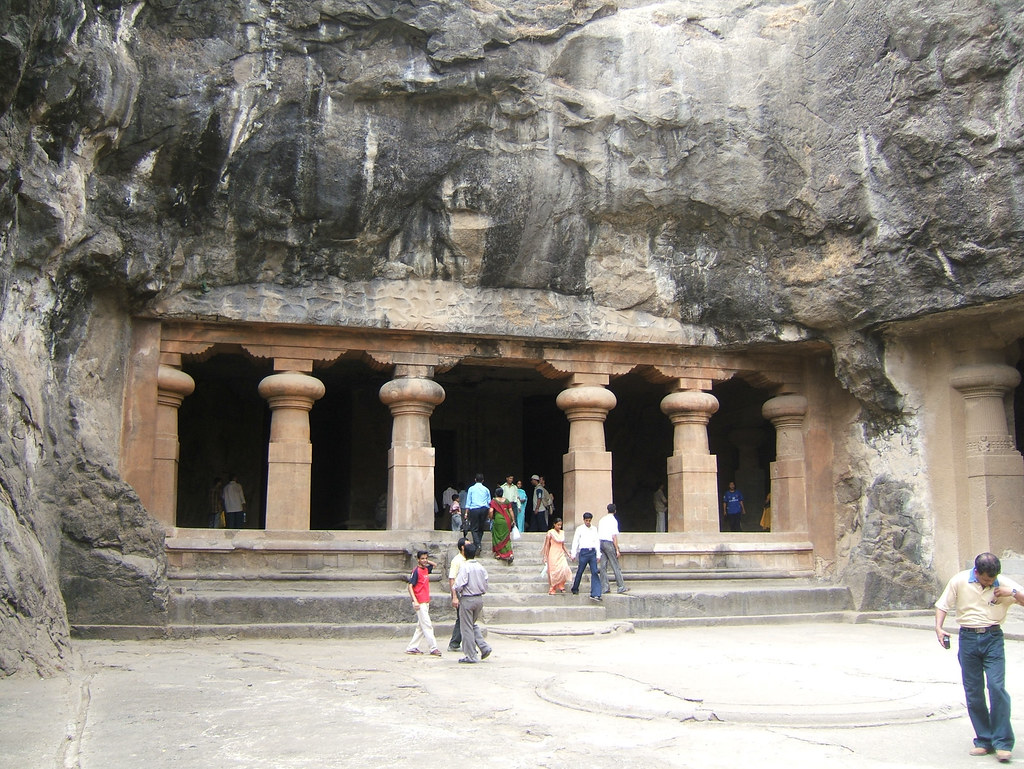
Located on Elephanta Island, the Elephanta Caves are a UNESCO World Heritage Site and a popular tourist destination in Mumbai. The caves are famous for their intricate rock-cut temples and sculptures dating back to the 6th and 7th centuries.
The caves are accessible by ferry from the Gateway of India and provide stunning views of the Arabian Sea and the Mumbai skyline. The journey to the island takes about an hour, during which visitors can enjoy the sea breeze and the scenic beauty of the coastline.
The Elephanta Caves consist of seven caves, of which the most significant one is the Mahesh-Murti cave. The cave features a three-headed sculpture of Lord Shiva, depicting him as the creator, preserver, and destroyer of the universe.
The caves also have several other sculptures and carvings depicting various Hindu gods and goddesses, as well as scenes from Hindu mythology. The intricate carvings and sculptures are a testament to the skill and artistry of the ancient Indian craftsmen.
The Elephanta Caves are also a popular spot for picnics and photography. Visitors can enjoy a leisurely walk around the island and explore the various caves while soaking in the history and beauty of the place.
In recent years, the Maharashtra Tourism Development Corporation has developed the island into a tourist-friendly destination, with facilities such as restaurants, souvenir shops, and audio guides.
Chhatrapati Shivaji Terminus
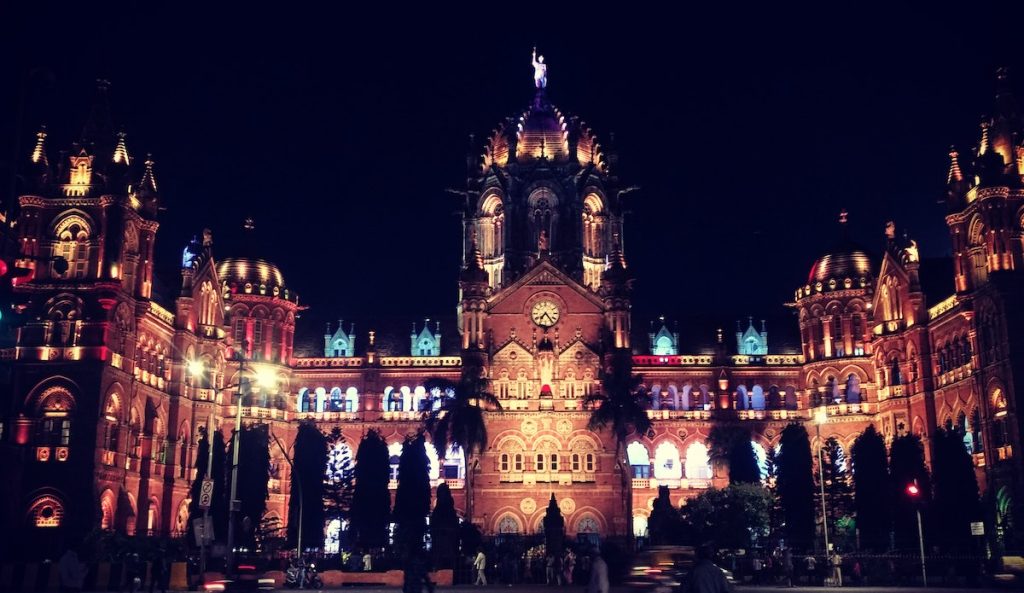
Chhatrapati Shivaji Terminus, also known as CST or Victoria Terminus, is a historic railway station located in the heart of Mumbai. It is a UNESCO World Heritage Site and a popular tourist destination, attracting visitors from all over the world.
The railway station was built in 1887 to commemorate the Golden Jubilee of Queen Victoria and is a fine example of Victorian Gothic architecture. The building features a high-domed roof, pointed arches, and turrets and is adorned with intricate carvings and sculptures.
Chhatrapati Shivaji Terminus serves as the headquarters of the Central Railways of India and is one of the busiest railway stations in the country. It connects Mumbai with several other major cities in India and is a major transportation hub for commuters and tourists alike.
The railway station is not only a testament to the colonial architecture of India but also a symbol of Mumbai’s resilience and spirit. It has witnessed several historic events, including the Indian independence movement and the 2008 Mumbai terrorist attacks.
Apart from its historical significance, Chhatrapati Shivaji Terminus is also a popular spot for photography enthusiasts. The stunning architecture, bustling crowds, and vibrant atmosphere make it a perfect spot for capturing the essence of Mumbai.
In recent years, the Maharashtra Tourism Development Corporation has developed the railway station into a tourist-friendly destination, with facilities such as guided tours, souvenir shops, and food stalls.
Crawford Market
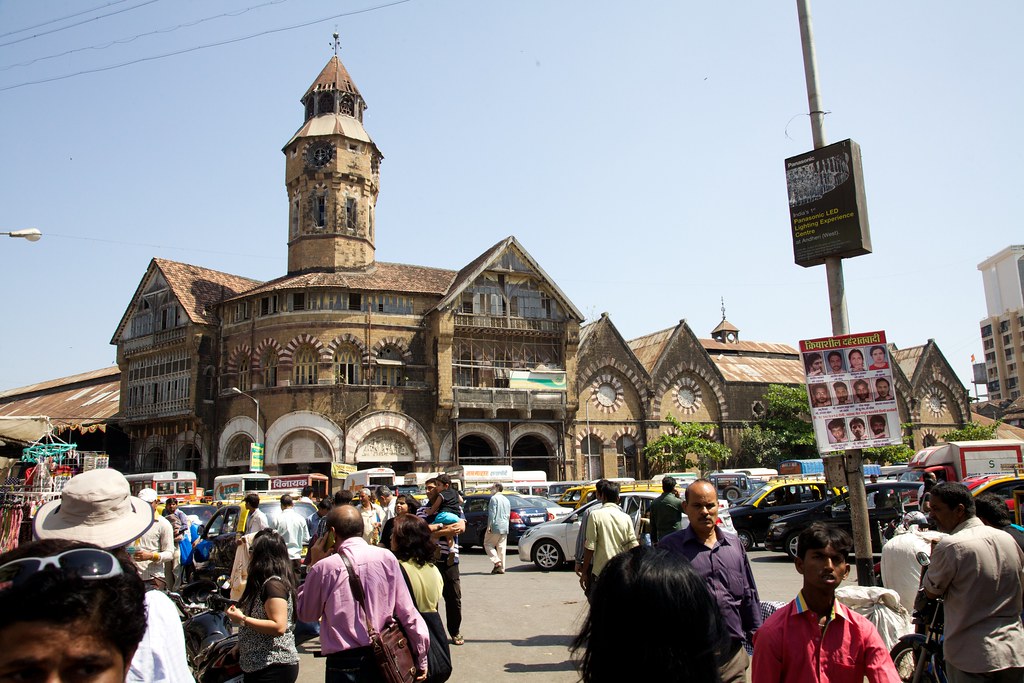
Located in the heart of Mumbai, Crawford Market is a historic and bustling market that has been a popular destination for locals and tourists for over a century. The market is a paradise for shoppers and offers a wide variety of goods, ranging from fresh produce and spices to clothing and souvenirs.
The market was built in 1869 and was named after Arthur Crawford, the first municipal commissioner of Mumbai. The building is a fine example of colonial architecture, featuring a high-domed roof and ornate carvings and sculptures.
Crawford Market is a must-visit spot for foodies, as it offers an extensive range of fresh fruits, vegetables, and spices at reasonable prices. Visitors can also find a variety of snacks, sweets, and street food stalls, offering a taste of the local cuisine.
Apart from its food offerings, Crawford Market is also a popular spot for shopping. Visitors can find a range of items, including clothing, accessories, and souvenirs, at reasonable prices. The market is particularly famous for its pet shops, offering a wide variety of exotic pets and birds.
In recent years, the market has undergone a renovation to modernize its facilities and improve the shopping experience for visitors. The market now offers amenities such as air conditioning, escalators, and a clean and hygienic environment.
Haji Ali Dargah
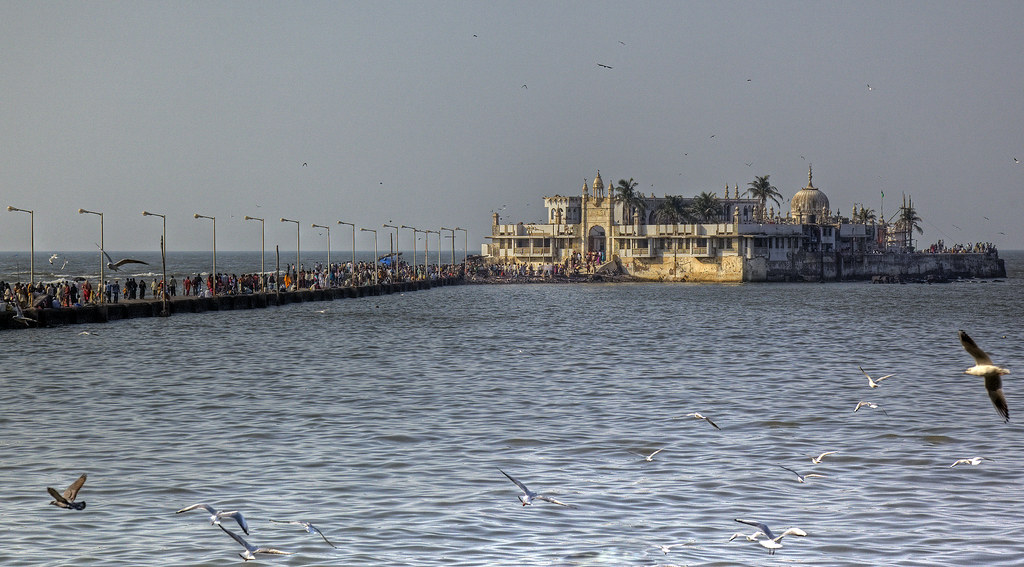
Haji Ali Dargah is a historic mosque and tomb located in the southern part of Mumbai. It is a popular destination for pilgrims and tourists alike and is one of the most recognizable landmarks in the city.
The mosque was built in the 19th century in memory of a wealthy Muslim merchant named Haji Ali who renounced all his material possessions and went on a pilgrimage to Mecca. Legend has it that Haji Ali died on his way back to Mumbai and his casket miraculously floated to the spot where the mosque now stands.
The mosque is located on a small islet off the coast of Worli and is connected to the mainland by a narrow causeway. The pathway leading to the mosque is lined with shops selling flowers, incense, and other offerings for visitors.
Haji Ali Dargah is a beautiful example of Islamic architecture, featuring a white marble facade adorned with intricate carvings and Islamic calligraphy. The mosque also houses the tomb of Haji Ali and is a place of pilgrimage for Muslims from all over the world.
Apart from its religious significance, Haji Ali Dargah is also a popular spot for photography enthusiasts. The mosque offers stunning views of the Arabian Sea and the Mumbai skyline and is a perfect spot for capturing the essence of Mumbai.
Siddhivinayak Temple
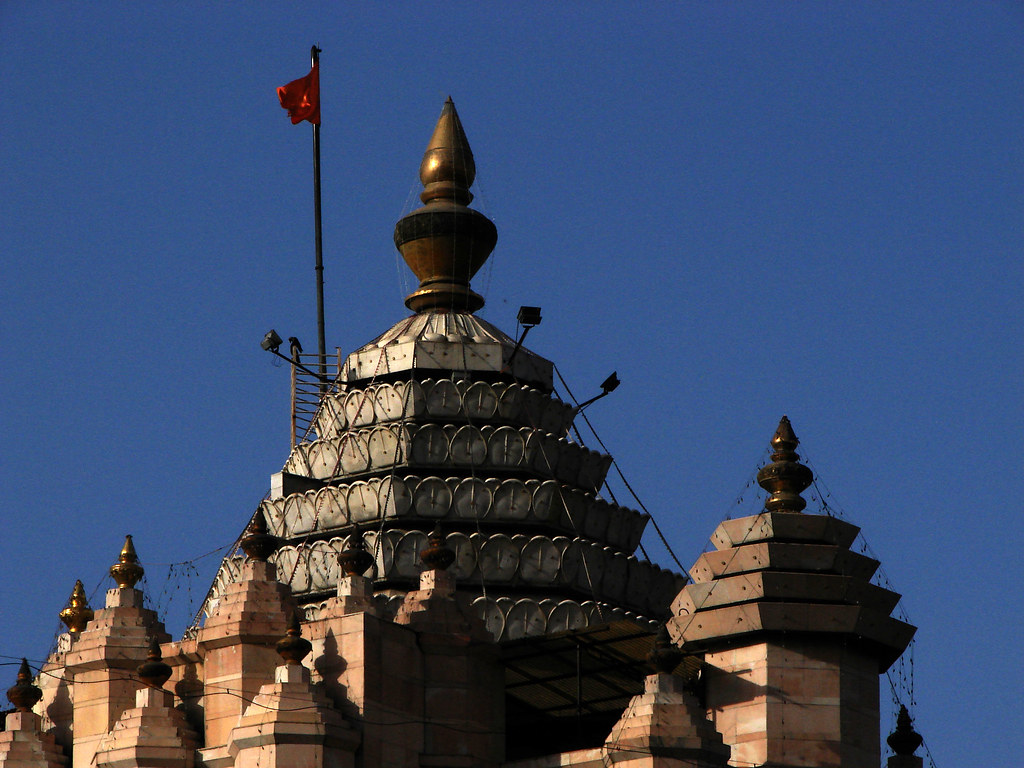
The Siddhivinayak Temple is a Hindu temple dedicated to Lord Ganesha, located in the central suburbs of Mumbai. It is one of the most famous and popular temples in the city and is visited by thousands of devotees every day.
The temple was built in the 19th century and has since become an iconic landmark in Mumbai. It is known for its unique architecture, which blends traditional Indian and contemporary styles. The temple is made of white marble and features a dome-shaped roof, intricate carvings, and beautiful murals depicting the life of Lord Ganesha.
The temple is dedicated to Lord Ganesha, who is believed to be the god of wisdom and prosperity. Devotees from all over the world visit the temple to seek blessings and offer prayers to the deity. The temple is especially crowded during the annual festival of Ganesh Chaturthi, which is celebrated with great pomp and splendor in Mumbai.
The temple has also gained fame for its association with Bollywood celebrities. Many famous actors and actresses have visited the temple to seek blessings before the release of their films or to express gratitude for their success in the industry.
In recent years, the temple has undergone renovations to improve its facilities and make it more accessible to visitors. The temple now offers amenities such as air conditioning, clean restrooms, and a clean and hygienic environment.
Sanjay Gandhi National Park
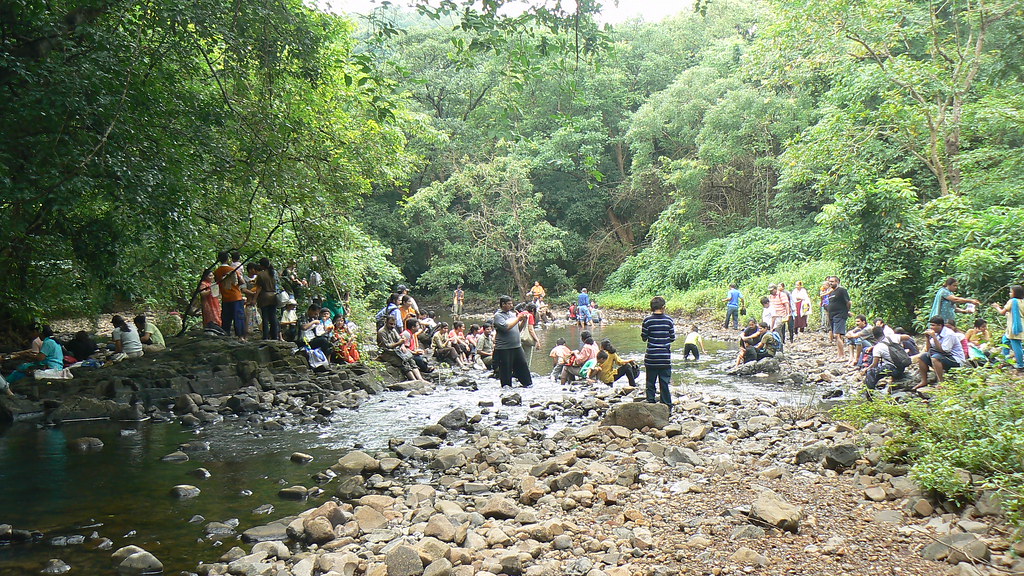
Sanjay Gandhi National Park is a protected area located in the northern part of Mumbai, Maharashtra. Spread over an area of approximately 104 square kilometers, the park is one of the largest national parks in the world that is located within city limits.
The park is home to a diverse range of flora and fauna, including more than 1,300 species of plants and over 200 species of birds. Some of the most prominent animals found in the park include leopards, deer, wild boars, and monkeys.
The park is a popular destination for nature lovers, adventure enthusiasts, and anyone interested in exploring the natural beauty of Mumbai. The park offers several activities such as hiking, trekking, and safari rides through the dense forest. The safari takes visitors through the park’s different zones, providing an opportunity to spot the park’s wildlife in their natural habitat.
One of the most popular trails is the Kanheri Caves trail, which takes visitors through a dense forest to a series of ancient Buddhist caves. The Kanheri Caves are a group of rock-cut monuments located in the park that dates back to the 1st century BC. The caves are famous for their beautiful sculptures and carvings depicting the life of Buddha and other deities.
Apart from its natural beauty, the park also boasts several man-made attractions, including a zoo, a botanical garden, and a boating lake. The park is also home to the famous Tulsi and Vihar Lakes, which provide a source of drinking water to the city of Mumbai.
Sanjay Gandhi National Park is an ideal destination for a day trip with family and friends. It offers a serene environment to unwind and relax amidst nature. The park is open throughout the year, and visitors are advised to wear comfortable shoes, carry water, and follow the park’s rules and regulations to ensure the safety of both visitors and wildlife.
Nehru Planetarium
The Nehru Planetarium is a popular tourist destination located in Mumbai, India. It was established in 1977 and is named after India’s first Prime Minister, Jawaharlal Nehru. The planetarium is managed by the Nehru Centre, which is an autonomous organization under the Ministry of Culture, Government of India.
The planetarium features a dome-shaped screen that provides a 360-degree view of the night sky, making it a popular attraction among astronomy enthusiasts. The planetarium hosts regular shows and exhibitions that educate visitors about space, astronomy, and the wonders of the universe.
The planetarium also has a dedicated Science Centre, which features interactive exhibits and displays that teach visitors about science and technology in a fun and engaging way. The Science Centre has several sections, including the Hall of Space, the Hall of Sound, the Hall of Life Sciences, and the Hall of Energy.
The Nehru Planetarium is a must-visit destination for anyone interested in space and astronomy. The planetarium regularly hosts shows and workshops for children, making it a great place for families to visit. Visitors can also attend the evening sky shows, which provide an opportunity to observe the night sky through telescopes and learn about different constellations and stars.
The planetarium has undergone several renovations in recent years, with the most recent one completed in 2020. The new state-of-the-art facility features upgraded technology, including a 3D projection system that provides an immersive experience for visitors.
Chor Bazaar
Chor Bazaar, also known as Thieves Market, is a bustling market located in the heart of Mumbai. It is famous for its wide range of second-hand and antique goods, including electronics, clothing, furniture, and household items.
The market is believed to have been established in the early 19th century and was originally intended for the sale of stolen goods. However, over time, it has evolved into a popular destination for bargain hunters and antique collectors.
Chor Bazaar is a labyrinth of narrow lanes and alleys, with vendors sitting on either side selling their wares. Visitors can find a wide range of goods at the market, from vintage cameras and watches to rare coins and musical instruments.
The market is also famous for its unique atmosphere and vibrant energy. Visitors can enjoy the hustle and bustle of the market and interact with the friendly vendors who are always willing to strike up a conversation.
Chor Bazaar is a great place to visit for anyone looking for unique and interesting items. The market is known for its affordable prices, but visitors should be prepared to haggle with the vendors to get the best deals.
Juhu Beach
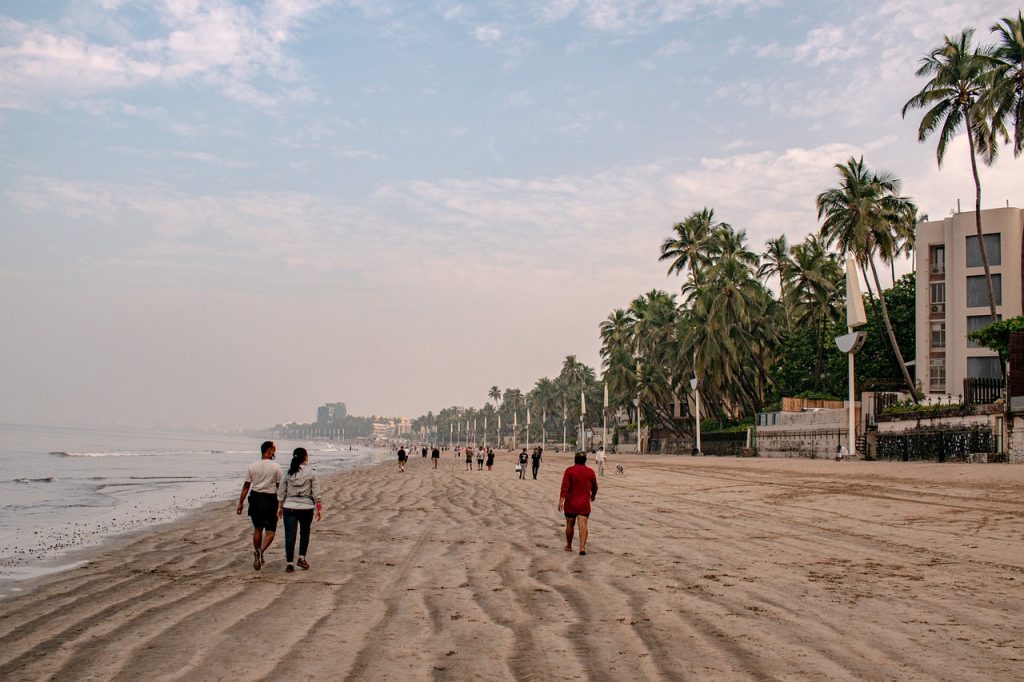
Juhu Beach is one of the most famous and popular beaches in Mumbai. Located in the western suburbs of the city, it stretches for over 6 kilometers along the Arabian Sea.
The beach is a favorite destination for locals and tourists alike, who come to enjoy the sea breeze, soak up the sun, and indulge in a variety of activities. Visitors can take a leisurely stroll along the beach, play cricket or football with friends, or simply sit on the sand and watch the waves crash against the shore.
One of the main attractions of Juhu Beach is the variety of street food available. The beach is lined with stalls selling everything from spicy chaat and vada pav to sweet corn and ice cream. Visitors can indulge in a range of delicious snacks while enjoying the sea view.
Juhu Beach is also famous for the iconic Juhu Chowpatty, a popular spot for family picnics and beachside gatherings. The Chowpatty is known for its lively atmosphere, with street performers, fortune tellers, and balloon vendors adding to the festive vibe.
In addition to its scenic beauty and lively atmosphere, Juhu Beach is also a popular shooting location for Bollywood films. Many iconic scenes from Hindi movies have been shot on the beach, and visitors can often spot film crews in action.
Worli Sea Face
Worli Sea Face is a popular promenade located in the Worli neighborhood of Mumbai. It is a 4-kilometer-long stretch of road along the Arabian Sea, offering stunning views of the sea and the Mumbai skyline.
The sea face is a favorite spot for locals and tourists to take a leisurely walk, jog or cycle while enjoying the sea breeze and the spectacular view. It’s also a popular destination for photographers looking to capture the perfect sunset shot or the twinkling lights of the city at night.
One of the main attractions of Worli Sea Face is the Worli Fort, a 17th-century fort located at the southern end of the sea face. The fort is a reminder of Mumbai’s rich history and offers panoramic views of the sea and the city.
The sea face is also a popular spot for street food, with vendors selling a variety of snacks such as bhel puri, pav bhaji, and vada pav. Visitors can indulge in some delicious street food while enjoying the view.
In addition to its scenic beauty and historic significance, Worli Sea Face is also a popular location for events and concerts. Many music concerts, food festivals, and cultural events are held on the sea face throughout the year, attracting a diverse crowd of locals and tourists.
Bandra-Worli Sea Link
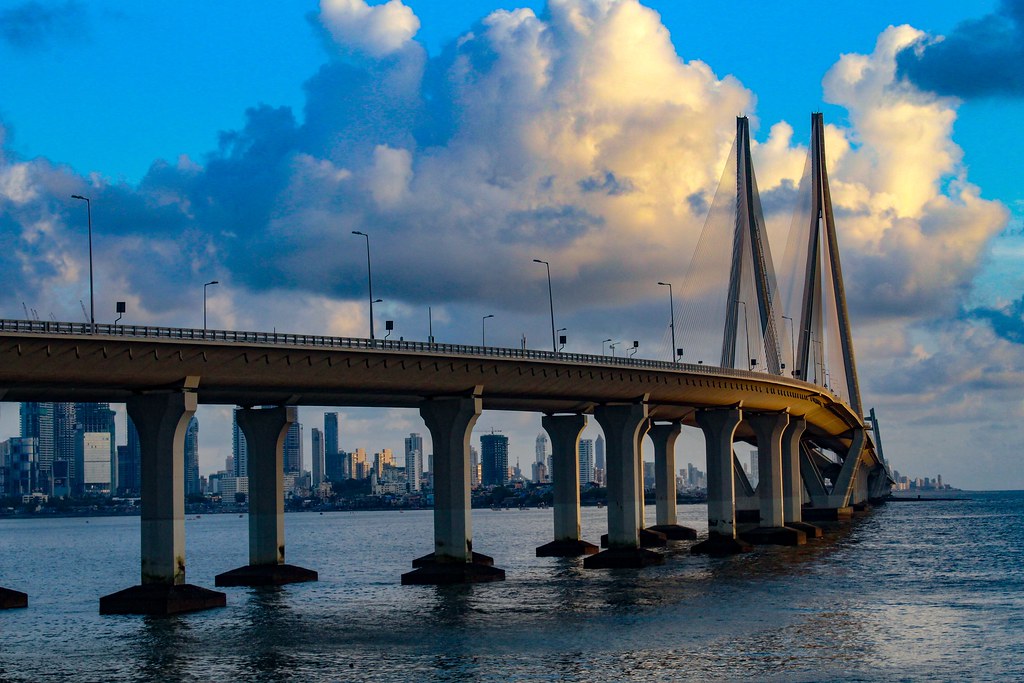
The Bandra-Worli Sea Link is a stunning cable-stayed bridge that spans the Arabian Sea, connecting the western suburbs of Bandra and the southern part of Mumbai. The bridge is a symbol of modern engineering and has become an iconic landmark of the city.
The sea link is 5.6 kilometers long and was built to ease traffic congestion in Mumbai. It consists of eight lanes and can accommodate up to 37,500 vehicles per day. The bridge is also equipped with a state-of-the-art surveillance system that ensures the safety and security of the commuters.
The Bandra-Worli Sea Link is a marvel of engineering and design. It features cable-stayed towers that are 128 meters tall and support the weight of the bridge. The bridge also has a unique curved shape that enhances its aesthetic appeal and makes it a popular destination for photographers.
Apart from its functional purpose, the sea link has become a tourist attraction in its own right. Visitors can take a drive or walk on the bridge and enjoy panoramic views of the Arabian Sea and the Mumbai skyline. The bridge looks especially beautiful at night when it’s lit up with colorful lights.
The Bandra-Worli Sea Link has also played a significant role in promoting tourism and trade in Mumbai. It has made travel between the western suburbs and the southern part of the city more efficient, and has encouraged the growth of businesses and industries in the region.
Chhatrapati Shivaji Maharaj Vastu Sangrahalaya
The Chhatrapati Shivaji Maharaj Vastu Sangrahalaya, formerly known as the Prince of Wales Museum, is a museum located in South Mumbai. It was built in the early 20th century and is one of the most significant heritage buildings in the city.
The museum’s collection includes artifacts and exhibits from various fields such as art, archaeology, and natural history. The museum is also home to several rare and unique collections, including ancient Indus Valley civilization artifacts, miniature paintings, and European paintings, sculptures, and decorative arts.
The building itself is a beautiful example of Indo-Saracenic architecture, which combines elements of Indian, Islamic, and Gothic styles. The museum also features beautiful gardens and fountains that add to the beauty of the building.
The museum offers a unique learning experience for visitors of all ages, with interactive exhibits and educational programs. It is a must-visit for anyone interested in Indian history, culture, and art.
Colaba Causeway
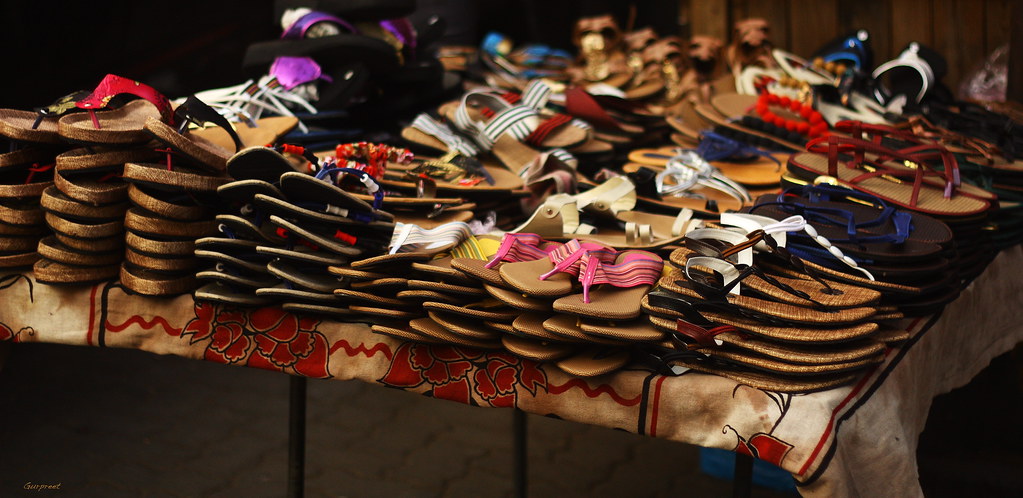
Colaba Causeway is a bustling street market located in the Colaba neighborhood of South Mumbai. It is a popular destination for tourists and locals alike, offering a wide range of products such as clothing, jewelry, accessories, handicrafts, and souvenirs.
The market is known for its vibrant atmosphere and colorful stalls, where vendors sell everything from traditional Indian garments to modern Western-style clothing. It is also a great place to try local street food, such as vada pav, bhel puri, and chaat.
In addition to shopping and eating, Colaba Causeway is also home to several historic buildings and landmarks, such as the Gateway of India, the Taj Mahal Palace hotel, and the National Gallery of Modern Art. Visitors can take a leisurely stroll along the waterfront promenade or explore the nearby heritage buildings and museums.
Hanging Gardens
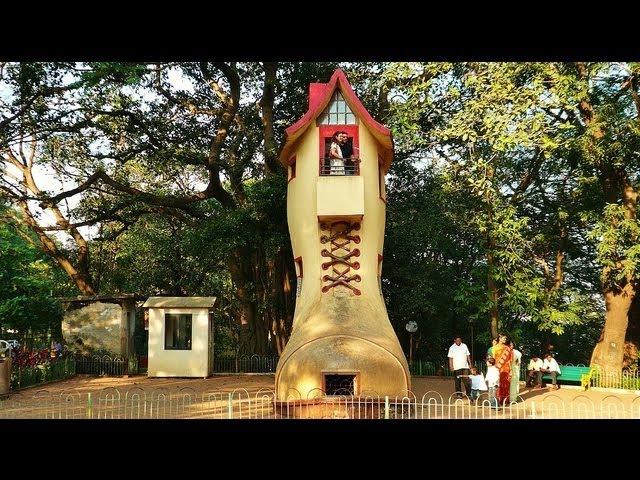
The Hanging Gardens, also known as Pherozeshah Mehta Gardens, are a beautiful terraced garden located in the heart of Mumbai. The garden is perched on the top of Malabar Hill, one of the city’s most affluent neighborhoods, and offers stunning panoramic views of the city skyline and the Arabian Sea.
The Hanging Gardens are a popular tourist destination in Mumbai and attract visitors from all over the world. The garden is a perfect place to relax and unwind after a busy day of sightseeing. The lush greenery, colorful flowers, and serene atmosphere make it an ideal spot for a picnic, a leisurely stroll, or just soaking up the views.
The garden was built in the early 20th century and is named after Pherozeshah Mehta, a prominent Indian political leader and social reformer. The garden is also home to several interesting features, including a large clock that was donated by a prominent Mumbai businessman, a beautiful flower clock, and several animal-shaped hedges that are popular with children.
One of the most striking features of the Hanging Gardens is the large water reservoir located beneath the garden. The reservoir is designed to collect rainwater and is an important source of water for the city. Visitors can take a stroll around the reservoir and enjoy the tranquil surroundings.
Kanheri Caves
Kanheri Caves are a group of Buddhist rock-cut caves located within the Sanjay Gandhi National Park in Mumbai. These caves date back to the 1st century BCE and were used by Buddhist monks as a place of meditation and study.
The caves are carved out of a basaltic rock and are situated in a lush green forest area, providing a serene and peaceful environment for visitors. The Kanheri Caves are a testament to the artistic and architectural skills of the ancient Buddhist civilization. The caves feature intricate carvings and sculptures, depicting the life of Buddha and his teachings.
The caves are divided into several levels, with the higher levels accessible via steep steps. The main cave complex includes a large prayer hall, several smaller chambers, and a stupa. The caves also feature water cisterns, which were used by the monks for their daily needs.
Apart from their historical and religious significance, the Kanheri Caves also offer a great opportunity for nature lovers and hikers to explore the lush green forest and wildlife of the Sanjay Gandhi National Park. Visitors can also enjoy panoramic views of the surrounding hills and valleys from the top of the caves.
The Kanheri Caves are a must-visit destination for anyone interested in ancient history and Buddhist art and architecture. They are open to visitors throughout the year and can be accessed via public transport or by hiring a private vehicle.
Essel World
Essel World is an amusement park located in Gorai, Mumbai. It is one of the largest amusement parks in India and offers a range of rides and attractions for visitors of all ages.
The park was opened in 1989 and has since become a popular destination for locals and tourists alike. It is spread across 64 acres and features over 70 attractions, including thrill rides, water rides, family rides, and kids’ rides.
Some of the popular rides at Essel World include Top Spin, Shot-N-Drop, Thunder, and Rainbow. The park also features a water park called Water Kingdom, which is spread across 22 acres and has over 30 attractions.
Apart from the rides, Essel World also offers various other attractions such as live performances, food stalls, and souvenir shops. Visitors can enjoy live shows by magicians, acrobats, and musicians, and can also indulge in a variety of food options ranging from local street food to international cuisines.
The park is open throughout the year, but the timings and ticket prices may vary depending on the season. Visitors can also purchase combo tickets to visit both Essel World and Water Kingdom.
Global Vipassana Pagoda
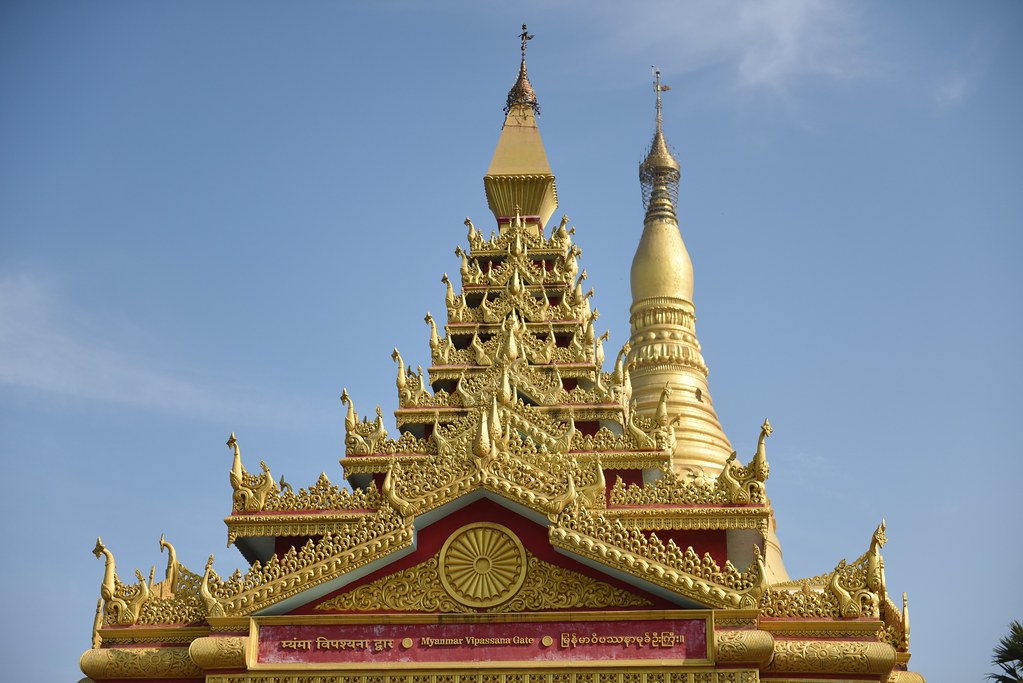
The Global Vipassana Pagoda is a beautiful monument located in Gorai, Mumbai, which is a significant symbol of peace and unity. It was inaugurated in 2009 and has since become a popular tourist destination in the city.
The pagoda is a replica of the Shwedagon Pagoda in Myanmar and is built using modern engineering techniques. It is one of the largest stone monuments in Asia and is made entirely of white marble. The pagoda is built in the traditional Burmese architectural style and has a large dome-shaped structure that is over 90 meters in diameter.
Inside the pagoda, there is a large hall that can accommodate up to 8,000 people. The hall is used for meditation and other spiritual practices and is equipped with modern amenities like air conditioning and sound systems. The pagoda also houses a large stone statue of the Buddha, which is over 12 meters tall and is one of the largest such statues in the world.
The Global Vipassana Pagoda is not just a religious monument, but also a center for the promotion of Vipassana meditation. Vipassana is a technique of meditation that was developed over 2,500 years ago in India and is now practiced all over the world. The pagoda is open to people of all religions and backgrounds who are interested in learning more about Vipassana meditation and its benefits.
In addition to meditation, the pagoda also hosts various cultural events and programs throughout the year. These events include talks on Buddhism and meditation, musical performances, and exhibitions on Buddhist art and culture.
The Global Vipassana Pagoda is a unique and beautiful monument in Mumbai that offers visitors a peaceful and spiritual experience. Whether you are interested in learning about Vipassana meditation or simply want to admire the beautiful architecture and surroundings, the pagoda is definitely worth a visit.
Versova Beach
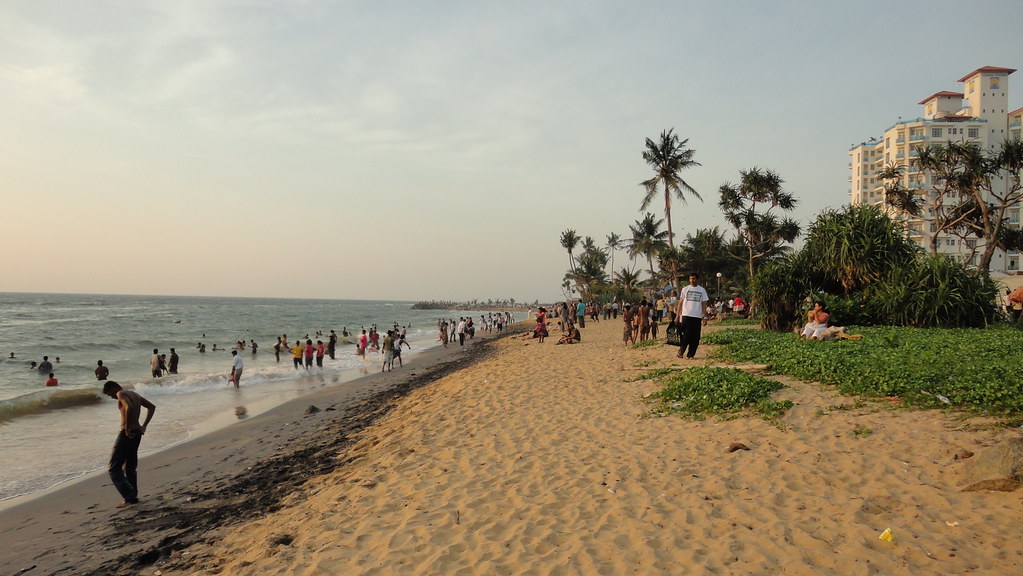
Versova Beach is a popular tourist spot located in the western suburbs of Mumbai. It is known for its stunning views of the Arabian Sea, white sand, and a long stretch of coastline. The beach is also known for its vibrant atmosphere, with a wide variety of street food vendors, cafes, and restaurants lining the shoreline.
The beach is a popular destination for locals and tourists alike, with many visitors flocking to the area to relax, take a stroll along the shore, or simply enjoy the sunset. The beach also offers a range of water sports, such as jet skiing and parasailing, making it an exciting spot for adventure enthusiasts.
One of the unique features of Versova Beach is its volunteer-driven clean-up campaign. The beach has been transformed from a littered and dirty beach to a clean and eco-friendly one, thanks to the efforts of local volunteers. The campaign has received international recognition, and the beach is now considered one of the cleanest in Mumbai.
Versova Beach is also known for its role in the conservation of Olive Ridley sea turtles. Every year, hundreds of Olive Ridley sea turtles come to the beach to lay their eggs, and the beach authorities and volunteers work tirelessly to protect the eggs and hatchlings.
FAQs On 20 Must-Visit Tourist Places to Visit in Mumbai
Q. What is the best time to visit Mumbai?
A. The best time to visit Mumbai is between November and February when the weather is pleasant.
Q. What is Mumbai famous for?
A. Mumbai is famous for its Bollywood film industry, historic landmarks, street food, and vibrant nightlife.
Q. What are the must-try dishes in Mumbai?
A. Some of the must-try dishes in Mumbai are Vada Pav, Pav Bhaji, Bhel Puri, and Pani Puri.
Conclusion
Mumbai is a city that has something for everyone. From historic landmarks to buzzing beaches, from mouth-watering street food to world-class museums, the city has it all. If you are planning a trip to Mumbai, make sure you visit the top-rated best tourist places to visit in Mumbai that we have listed above. We hope this guide helps you plan your trip to Mumbai and makes it a memorable one.






